Mustard is a famous spice, widely used in cooking. But little knows that this plant is often used as a ciderat. White mustard is a popular and valuable green fertilizer, capable of significantly improving the composition of the soil, enriching it a number of nutrients.
Belaya mustard is an absolutely simple and unassuming plant, which can be easily grown on its plot. But the result will exceed all the expectations. After such a "green feeding", the soil becomes more festive, and the crops of subsequent cultures are high. On this advantages of Mustard White are not limited. All questions regarding the landing and care of mustard, choosing a variety and scope of culture, are read in this article.
White mustard, plant description
- The plant "Belaya mustard" is often found under the same name - "Biggish mustard." The initial designation of the species is associated with whites of the coloring seeds.
- This species resembles the genus Mustard of the family of cabbage and is an annual herbaceous culture.
- The Mediterranean region is considered the natural range of Mustard White, from which it has spread almost all over the world. In Russia, this species is found as a weed grass on roadside roads and fields.
- What does the White mustard look like? The height of the plant reaches from 25 to 100 cm. Stems at mustard upright, tubular, at the top of branched, covered with rigid hairs. Gusto-desirable stems mustard make it possible to increase the rich green mass in the shortest possible time.
- White mustard leaves are damned disseated and stiff. Moreover, the shape and degree of dissection of the lower and upper leaves of the annual difference is slightly different.
- The rod root of the plant is long and can grow to a depth of 1.5 meters. The side roots of the mustard are located horizontally in the upper soil layer, 50-70 cm away from the main root.
- Culture is pollinated by insects, which attracts yellow (less often white) coloring flowers and pleasant fragrant fragrance. Flowers are collected in a lush inflorescence with a brush of 3-5 pieces. Blossom abundant, in nature comes in June-July.

- At the end of flowering (in August), fruits ripen - pods with round small (1-2 mm) seeds, whites-yellow. Rising pods are uneven, tuberculous, with rigid sticking hairs.
- The seeds of the mustard have long been considered a useful and therapeutic product. A rich chemical composition allows them to be used not only in food, as a spicy-acute seasoning, but also for therapeutic purposes. Seeds contain fatty and essential oil, proteins, glycoside (synalbin), enzyme (melozin), saturated and unsaturated fatty acids (olein, palmitic, erup, linoleic, arachnaya, etc.).
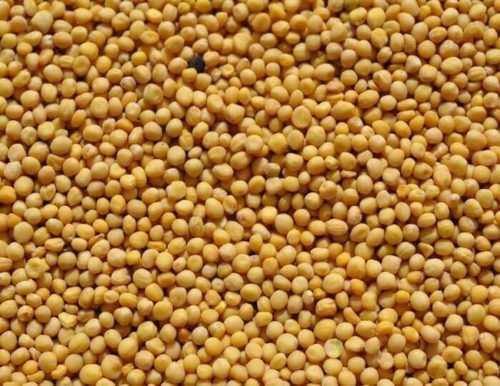
White mustard, value and application
- Mustache oil containing valuable and indispensable oh-3 and omega-6 fatty acids are obtained from white mustard seeds. Oil is used not only in cooking, but also in pharmacology, cosmetology, soap and even for technical purposes (as a lubricant of motors).
- One of the key branches of the use of Mustard White - Cooking. Seeds, powder or mustard oil are used to prepare a variety of dishes, including the caustard of mustard, for canning vegetables, fish or mushrooms. Of them make sauces, refueling and marinades. White mustard seeds have a more piquant and soft taste compared to other types of mustard. In some countries in food (mainly in salads), young leaves of mustard mustard are also used.
- White mustard seeds are used in medicinal purposes: in pharmacology and traditional medicine. From the seeds make mustard powder for the preparation of mustard patches used in pain syndromes and rheumatism. In addition, seeds are used in the treatment of a number of diseases: hypertension, meteorism, skin eczema, gallbladder and liver diseases. Frequently, the mustard was famous for its expectorant, anti-core and antitussive properties. The use of spices contributes to the normalization of digestion, improving appetite.
- An annual herbal culture during his flowering is considered excellent honey. Mustard honey has a pleasant aroma and spicy taste.
- Young green mustard landings also use a cattle.
- There is another, no less important, scope of the plant. White mustard is grown as a popular ciderat (i.e. green fertilizer) for the purpose of embedding the green mass into the ground to improve its structure, enriching nitrogen and prevent the appearance of weeds. To do this, the green mustard is sticking and close in the ground so that it is well decomposed and overloaded. White mustard, like green fertilizer, contains a mass of nutrient and useful for soil substances: nitrogen, phosphorus, protein, starch, microelements, etc. Enriched soil will subsequently become a fertile "bridgehead" for the active growth and development of other crops sitting on the site. During the sealing of fertilizer into the soil, a compost layer is formed on its surface, which, moreover, prevents blurring or blowing the upper layer of the soil, prevents it from leaching.

- In addition to the listed qualities, the beveled green mass of grass purifies the soil from the paste, phytoophulas, fights with putrid bacteria and harmful insects (slugs, fruzing, tool, wedge). Therefore, the grass is often planted next to vegetable crops, such as potatoes or beans. On this, the valuable properties of the "mustard-siderate" do not end. The layer of bevelled green mass by winter turns into a mulching layer that protects the soil from the freezing and retaining more moisture to spring.
- The blooming mustard white, landed next to the fruit trees or shrubs will contribute to their pollination.
White mustard, interesting facts
- Belaya mustard was used as a spice since ancient times. So, there are first recipes for the preparation of mustard sauce with Indian culinary sauce in 3000 BC.
- Pollen mustard is useful and necessary not only to bees, but also to people. Its consumption allows you to strengthen the immunity, the nervous system, which has a beneficial effect on the cardiovascular system, normalizes the pressure and stimulates brain activity.
- In one of the states of the United States, Wisconsin, quite worship this plant. There are annual mustard festivals, the mustard Museum is open and there is even a specialized mustard college.
- The historical fact is known when the mustard seeds became the subject of military negotiations. When the Persian Tsar sent Alexander the Macedonian symbolic "challenge" - a bag of sesame seeds, hinting for the numerous army, Alexander responded to a small bag of mustard seeds, which as it were, that although his army and less, but in battle it is much hot.
- Mustard powder use hostesses as an environmentally friendly, biological detergent, incl. And for washing dishes.
- In Denmark, there is an interesting tradition: scatter the mustard in the house, so that there were happiness and wealth in the family, and all evil forces disappeared.
- In Germany there was an ancient wedding tradition: to sew the bride in the wedding dress of the Granusha mustard, which was considered a symbol of a strong long marriage.
White mustard varieties
Consider the most popular and common varieties of mustard white.
- Mustard variety White "Seagull".
Early grade of white mustard, the growing season of which is 80-90 days. Technological (adapted mechanization), high-yielding grade, which allows to receive about 2 tons of grain with 1 hectare of land. The variety is resistant to lodging, almost not subject to squeezing. Culture is characterized by a number of improved biochemical indicators, in particular, 50% reduced the content of erukic acid, which is slowly and poorly processed in the human body.
- Mustard variety White Rhapsodia.
The variety is cultivated as a stern, seed and oilseed. The variety is early, with a period of vegetation only 60-75 days. The height of the stem reaches an average of 1 meter. The harvest of seeds of Mustard White "Rhapsodia" is 2-2.14 tons with 1 hectare of land, green mass - from 15 to 40 tons with 1 hectare. A cold-resistant variety, with pronounced phytosanitary properties, is suitable for mechanized cleaning. The content of essential oil is about 0.17%. This variety is considered one of the best sites.
- Mustard variety White "Wiimk-162".
The result of Moscow breeders, the Viimk-162 variety is the rapid, high-yielding and resistant culture in pests. The plant is densely desirable, currented bush, covered with rude hairs. Large seeds contain less fat than other mustard varieties.
- Mustard variety White "Etalon".
Hybrid Mustard Grade White Summer. The main purpose is the production of mustard powder. The growing season is about 100 days. The variety is resistant to seasoning, pests and squeezing seeds.
- Mustard Grade White Talisman.
A variety of the growing season is about 80 days, a yield. In height, the plant reaches about 100 cm. Culture stem branched, sown with hard hairs. Oliness is about 28%, seed yields - up to 2 tons with 1 hectare.
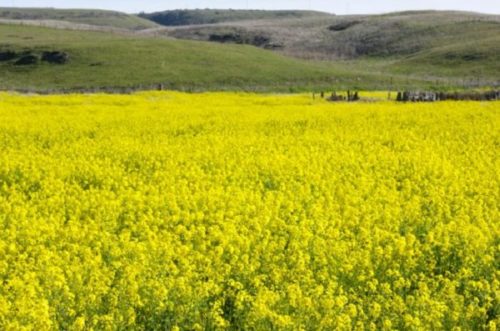
White mustard, landing features
White mustard cultivation is a simple and not laborious process. At the same time, the main thing is to know and take into account the key features of planting seeds, time sowing and harvesting culture.

How to sow a white mustard?
- The seeds of the White mustard, though small, but slightly convex, so it is quite convenient to capture them with your fingers in the crop. In this regard, sowing the White mustard is carried out by 2 ways: ordered (in row) and not ordered (scattering seeds in the garden).
- Landing in a row way is carried out, as a rule, when growing mustard on seeds (as seasonings) or as a companion plant (between rows of major culture). To do this, at pre-prepared beds, we have a mustard in rows, observing the interval between the seeds dropped 10-15 cm. The distance in the conduits leaves about 20 cm. These parameters are determined by the spreadability of adult mustard bushes in need of a certain space.
- When landing strongly plunge the seeds in the ground is not worth it, as it will significantly slow down their germination and weaken the plant. The maximum seed seed depth on loose soils is 1.5 cm, on clay or dense - no more than 1 cm.
- The first shoots of mustard appear very quickly, already on the 3-5th day after landing. And in a month, thick and lush grass reaches a height of about 16-20 cm.
- Also an accelerated (not ordered) method of planting seeds is allowed when the seeds are simply scattered over the site. In this case, the soil is prepared in advance: loose and smash, and after sowing, the seeds are slightly plunged into the ground with robbles. It is not scary if part of the seed after the landing remains on the surface, after watering, they themselves will fall into the loose ground. The average rate of consumption of seeds of this planting method will be larger and will be about 5 g per 1 m 2 Land. It does not need to be afraid of "dense crops," since the thickened landings are delayed washing the nutrients in the rain period and prevent the soil erosion.
- As for the preparation of the soil for planting seeds of white mustard, there is a certain simple algorithm of the work performed: Clean the garden from weeds or vegetable residues; Make organic fertilizers (humus) at the rate of 1 bucket per 1 m 2 lands; Add to the soil Dolomite flour (wood ash or river sand); Plug and dissolve the plot with robbles.
- Belaya mustard is not attracted to a certain degree of illumination and is equally well growing both at open solar sites and on a slightly shaded. In the shadow, the plant will develop worse and slowly increase the green mass.
- For planting plants, almost any soil types are suitable: sandy, loam, chernozem. It is not only worth heating mustard on sour or wetched soils. The optimal level of acidity is pH 6.5, although the range of permissible acidity for planting mustard is large enough and varies from 4.5 to 8.2. Thus, it is possible to sow grass on an acidic, neutral and alkaline soil. Better, if it is a lightweight and drainage soil.
- In the case of very scanty and not fertile soils, one mustard white will not be able to fully ensure the fertility of the soil substrate. In this case, experts recommend using a landing at once several species of plants - Sideratov (Rye, Lupine, Facelia, legumes, etc.).
When to sow a white mustard?
White mustard can be sown at any time, from spring to late autumn. Most often landing green fertilizer is carried out in spring or autumn.
- When boarding the white mustard-sitting of early spring, you can have time to focus the bed until the start of the main vegetable crops. In this case, sowing should be started in March-April, after the air temperature is set at about +10 0C and completely stop night frosts. Although an unpretentious plant often begins to germinate even at a temperature of +5 ° C. The period of vegetation of mustard fertilizers is about 5-6 weeks. Therefore, to calculate the time of planting the plant follows at least 1 month before the landing of the main culture.
- If the mustard planted on the site in order to get seed material, the plant is sown in spring, providing a smaller sowing density than when planting culture to fertilizer.
- It is important to remember that after the mustard one should not land cultures - "relatives" from the family of cruciferous (radishes, salad, cabbage, radish), having the same diseases and pests. Otherwise, the risks of infection of vegetable crops are great.
- White mustard, landed in autumn, perfectly heal and improves the soil, especially after planting potatoes and cereals. Given the short vegetation period of the fertilizer mustard and the fast germination of its seeds, the planting of the mustard white must be carried out after harvesting the harvest of the main vegetable crops. After cleaning the garden, it remains quite warm days for ripening green fertilizer.
- Sowing a white mustard under winter is also allowed so that the plant shoots appear in the spring. In this case, seeding must be produced late in the fall into loose cold soil so that the seeds do not start germinate, and remained all winter at rest. However, the planting material is not extinct, the depth of seed seeds for the winter is slightly increased.
- Often, the mustard is sown in the summer, between the rows of already landed major crops. The fast-growing grass will protect the garden from the "aggression" of the weeds and will serve as an excellent fertilizer of the soil.
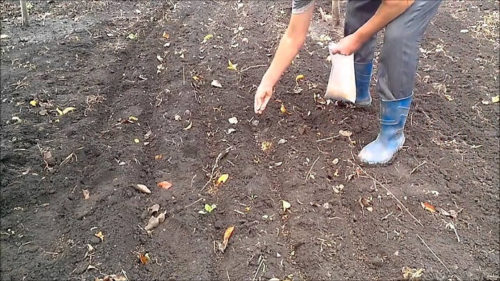
When to rush mustard white?
White mustard is a convenient unpretentious green feeding, which does not require large financial and labor costs.
- Green masses of mustard close (cheer) into the ground in the same place where it grown. If the mustard planted next to vegetable crops in order to prevent the appearance of weeds, it is simply smeared and close in the soil with a trick. The beveled green mass should be in the upper (surface) soil layer. Too deep sealing of the Siderate will be less effective.
- When planting a piece of mustard with the goal of the soil fertilizer, green grass, most often, weigh a scythe or mechanized way.
- It follows to rush or spray a green mustard before the onset of the flowering of a systemic culture so that its stems do not cut, and were soft as ordinary herb. Otherwise, dense coarse stems mustard will be poorly recycled and rotting. In addition, if not to mock the plant until the seed aging, the mustard will begin not controlled distribution throughout the site. Then the white mustard can easily turn into an annoying weed.
- The only option when there is no need to make green grass - early autumn planting of the Siderate. In winter, frosts successfully will "clean" mustard instead of man. In addition, the remaining stems and the roots of the mustard of white will delay the snow on the plot, while maintaining the maximum humidity of the soil.
- To speed up the processing of the system for the processing of the Siderate in the soil, the mustard white before the mowing is watered with a solution of microbiological fertilizer that improves fertility and the composition of the soil. For these purposes, it is possible to use, for example, the "Baikal Em-1" concentrate.
- In addition, the process of decomposition of green fertilizer takes place actively and intensively, the area is periodically moistened with water. In a dry condition, the processing of the Siderate is slow.
- In the case of "resuscitation" of the land plot, for a long time in the mode of reinforced operation, in addition to the moody mustard, add vermicultivated compost, rich in fast-acting earthworms.
- After the mowing and sealing mustard into the ground, the following landings on this garden are planning not earlier than 1-1.5 weeks. During this time, the Siderats begin to overweight and mix with the soil. Landing the following plants on this bed will be preceded by a mandatory portion of the site.

White mustard care
As noted above, planting mustard White practically do not need to care.
- It is enough to provide a one-year culture moderate watering so that the soil does not strongly swam, and the roots did not suffer from lack of moisture. So, the mustard landed in the spring will not need watering, since the soil at this time of the year still contains a sufficient amount of moisture. The annual, landed at another time of year, is watered as needed, depending on natural precipitation.
- Cold-resistant plant, white mustard, capable of carrying freezes to -5 0WITH.
- The pests mustard are practically not terrible. Occasionally, fleece or cabbage trouble may appear on young seedlings. To combat parasites, insecticides of the Voltone type, "Fastak", "Decis", etc. are used.
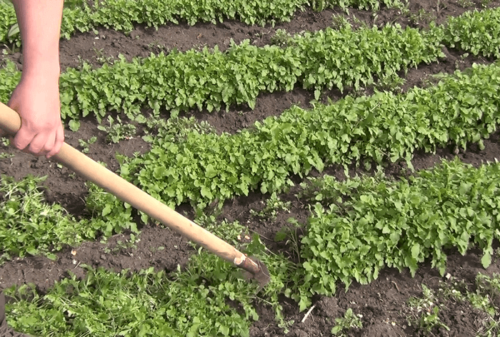
Advantages of Mustard White
- Belaya mustard is distinguished by rapid growth and growing green mass, which is an excellent way against weeds. In addition, the high yield of mustard makes it possible to receive about 400 kg of green fertilizers from one weekeeper.
- Belaya mustard scares many insect pests and slugs. Especially well to plant potatoes or other grained cultures, as the mustard will completely "deepeble" typical pests of these vegetable crops. In addition, the mustard distinguishes special substances that prevent the growth of bacteria and mold into the soil. This means that vegetable cultures planted after mustard can "not be afraid of" pathogenic flora of pasta, phytoophulas and grinding microorganisms.
- Plant - Siderate improves the structure of the soil, saturates its useful trace elements. At the same time, the landing of mustard strengthen the soil and prevent the appearance of erosion and weathered. After the cultivation of annual grass, the soil becomes loose, fertile saturated with oxygen.
- The beveled green mass of mustard White is an excellent balanced fertilizer forming humus. This nutrient organic matter is useful and necessary supreme plants. Green landings of beveled mustard are absorbed in the soil. Efficiently soluble minerals and translate them into easily accessible forms.
- Mustard - Siderate helps accumulate nitrogen in the soil, contributing to the enrichment of this element, improving the granulometric composition of the soil and preventing her leaching.
- Planting mustard allows you to significantly reduce the crop rotation and return the vegetable culture to the previous place before the desired deadlines for 1-2 years.
- The mustard beveled in the fall prevents the fitting of the soil, protects the prime planting of crops and contributes to the detention of snow, and therefore moisture in the ground.
- Often, the mustard white is sown in open ground as a useful companion plant. Thus, the root discharge of mustard contributes to the growth and development of legumes and grapes, and the mustard, landed under the trees or shrubs, scares the TRU and the fruit. Thus, the landing of the ordinary mustard white increase the yield of not only crops planted after it, but also growing near the plot.
- White mustard seeds are easily accessible, they can be bought in any specialized store. They are not expensive, and before planting do not require additional preparation or processing. Current care is also simple, without much labor costs.
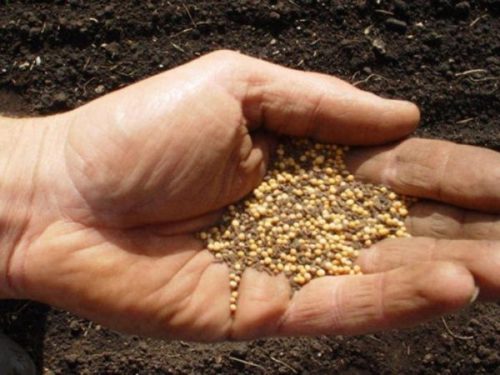
Mustache white flaws
- Representative of cabbage (cruciferous), white mustard, has common diseases and pests with other representatives of this family. In this regard, in the process of growing mustard, the rules of crop rotation should be observed. Do not land near the mustard (or immediately after it) cabbage, radishes or turnips.
- Mustard seeds are often seen superficially, which can serve as an affordable bird feed. Sliding seeds, birds can destroy almost the entire seating material. In order to avoid this, the seeds need to deepen into the ground, and on the winter, sprinkle a mulching layer.
Thus, the benefits of planting mustard are hard to overestimate. A fast-growing, high-yielding, unpretentious culture will become an indispensable and valuable nutritional fertilizer for the land plot. And considering that the technology of planting and care for annual is absolutely simple and unpretentious, any gardener, even an amateur, will be able to take advantage of similar beneficial properties of this herb.

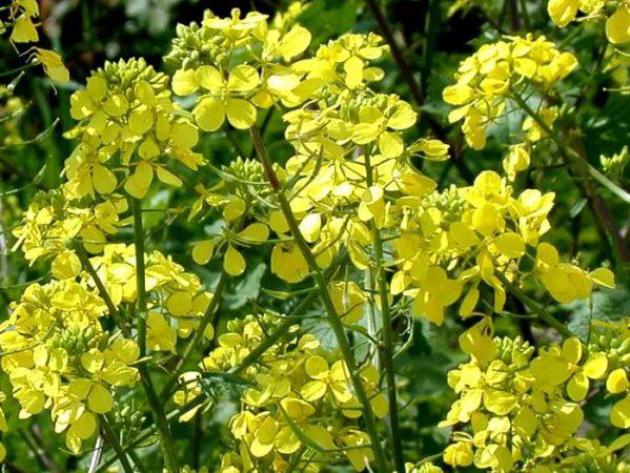
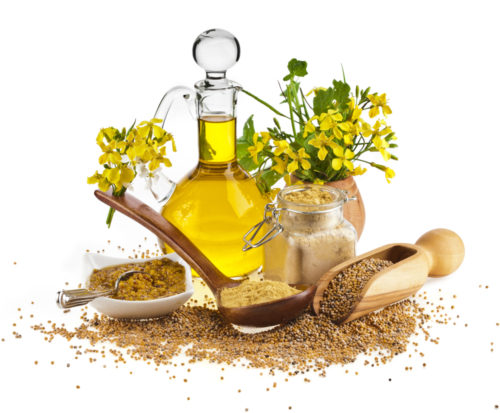

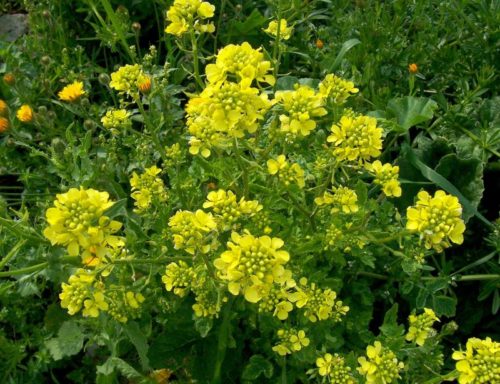

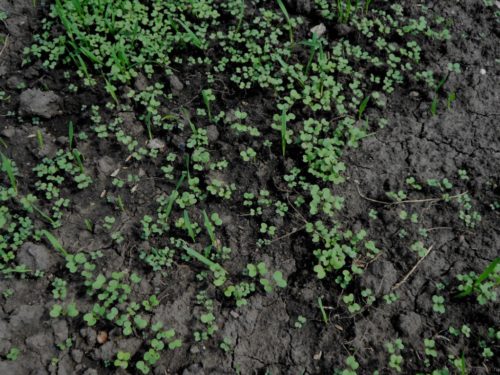
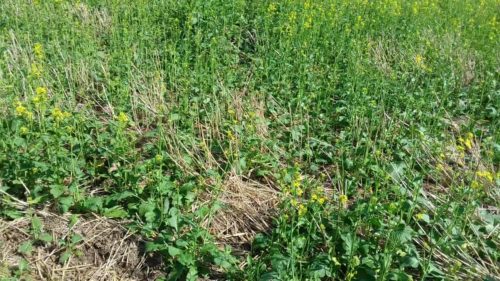

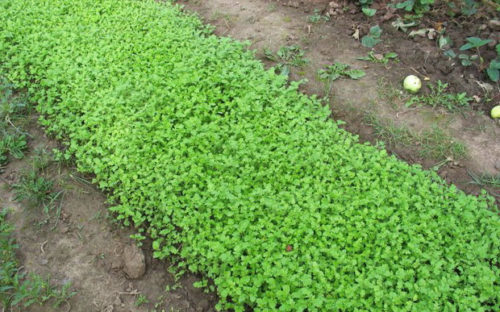
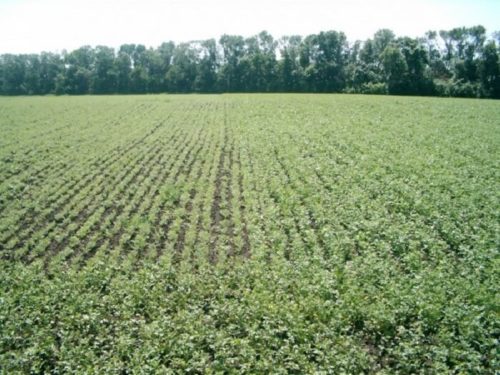
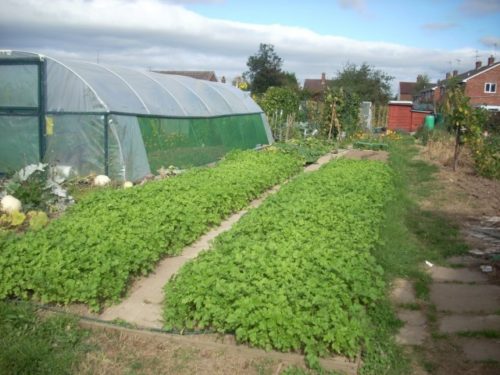













 Start a discussion ...
Start a discussion ...